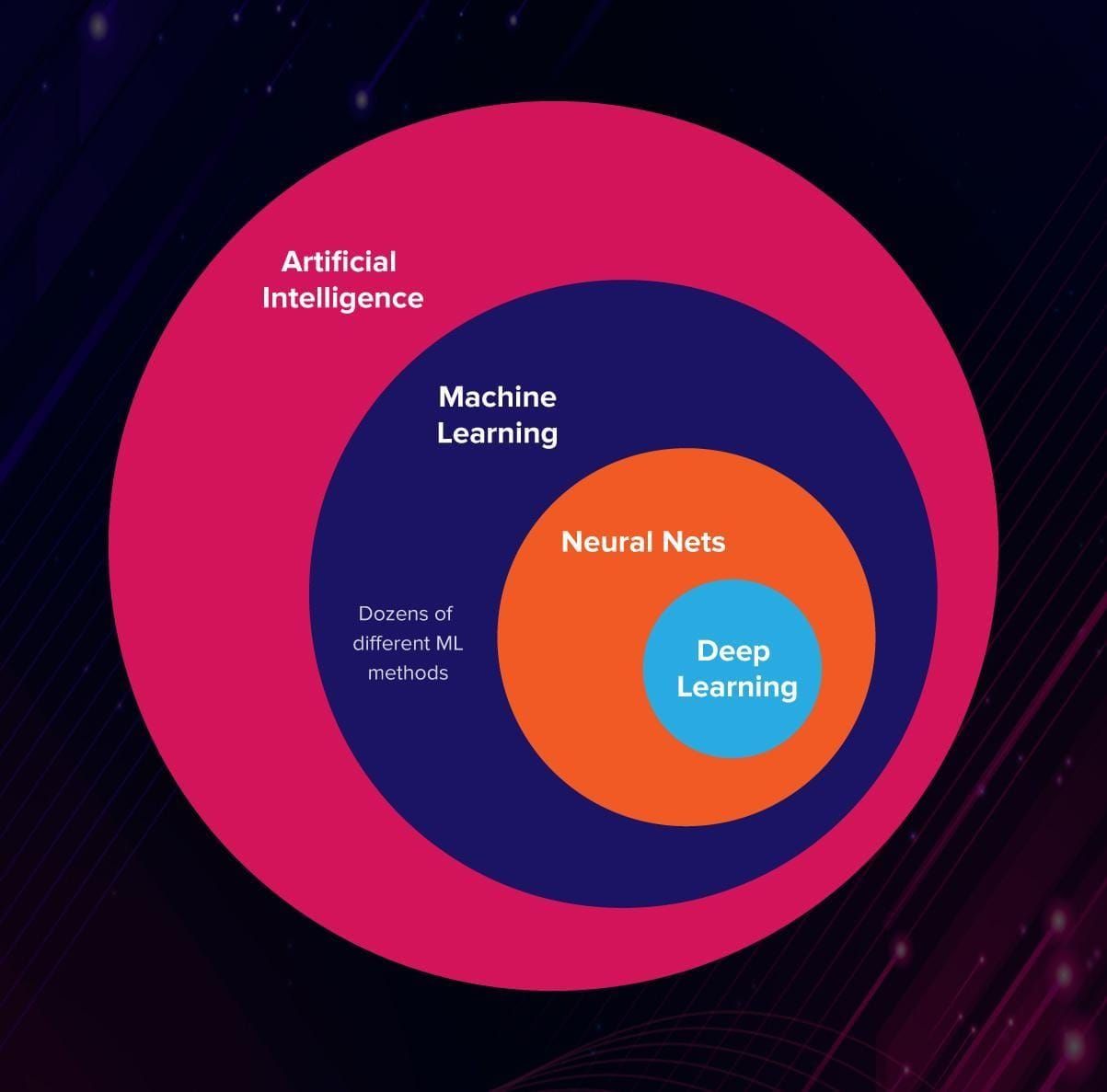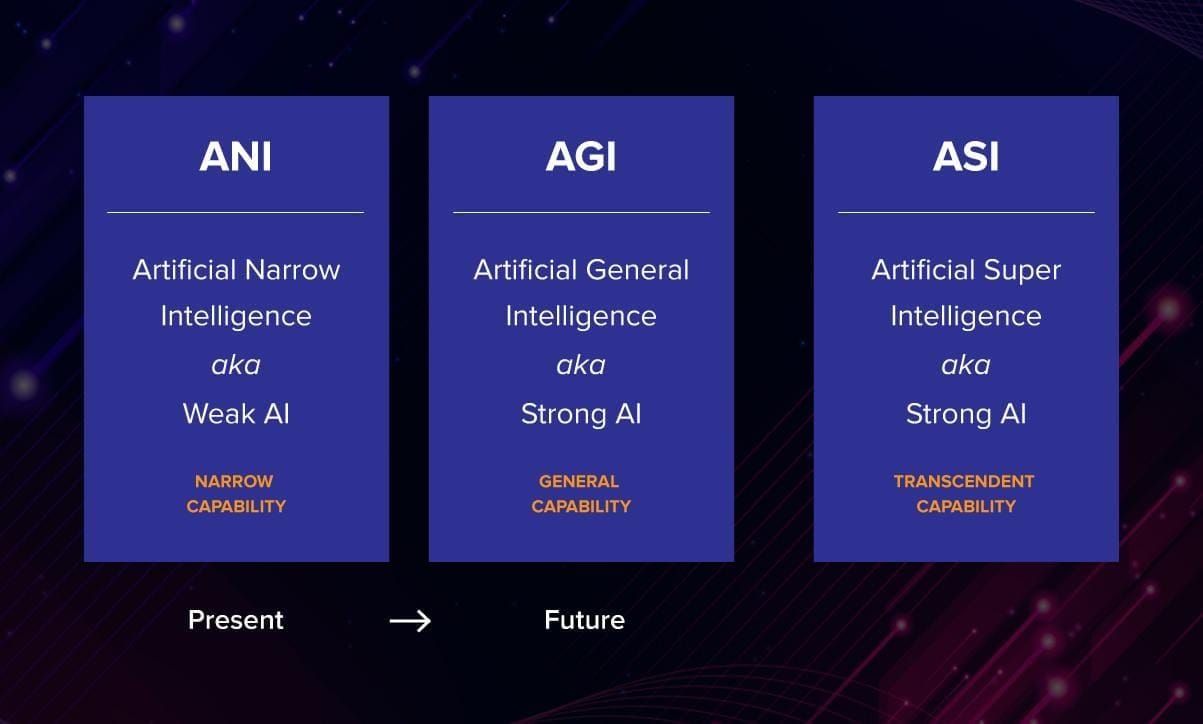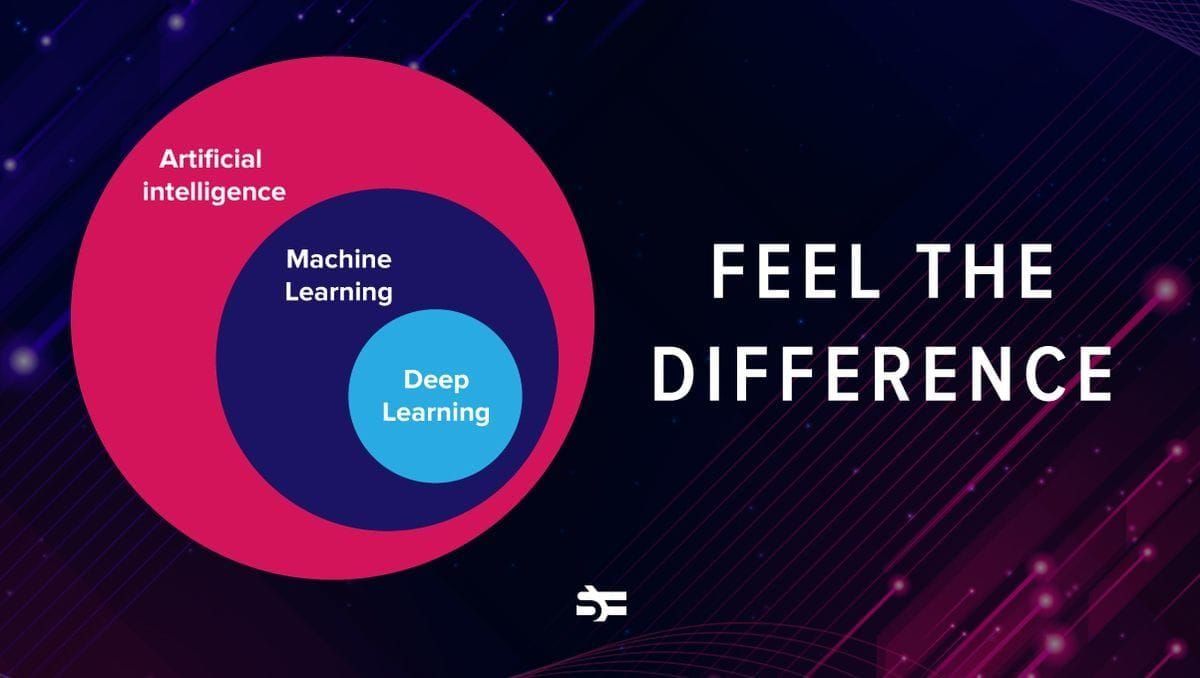In 2020, people benefit from artificial intelligence every day: music recommender systems, Google maps, Uber, and many more applications are powered with AI. However, the confusion between the terms artificial intelligence, machine learning, and deep learning remains. One of popular Google search requests goes as follows: “are artificial intelligence and machine learning the same thing?”.
Let’s clear things up: artificial intelligence (AI), machine learning (ML), and deep learning (DL) are three different things.
- Artificial intelligence is a science like mathematics or biology. It studies ways to build intelligent programs and machines that can creatively solve problems, which has always been considered a human prerogative.
- Machine learning is a subset of artificial intelligence (AI) that provides systems the ability to automatically learn and improve from experience without being explicitly programmed. In ML, there are different algorithms (e.g. neural networks) that help to solve problems.
- Deep learning, or deep neural learning, is a subset of machine learning, which uses the neural networks to analyze different factors with a structure that is similar to the human neural system.

3 faces of artificial intelligence
The term artificial intelligence was first used in 1956, at a computer science conference in Dartmouth. AI described an attempt to model how the human brain works and, based on this knowledge, create more advanced computers. The scientists expected that to understand how the human mind works and digitalize it shouldn’t take too long. After all, the conference collected some of the brightest minds of that time for an intensive 2-months brainstorming session.
Surely, the researchers had fun during that summer in Dartmouth but the results were a bit devastating. Imitating the brain with the means of programming turned out to be… complicated.
Nonetheless, some results were achieved. For example, the researchers understood that the key factors for an intelligent machine are learning (to interact with changing and spontaneous environments), natural language processing (for human-machine interaction), and creativity (to liberate humanity from many of its troubles?).
Even today when artificial intelligence is ubiquitous, the computer is still far from modelling human intelligence to perfection.
AI is generally divided into 3 categories:

Narrow/Weak AI
To understand what weak AI is, it is good to contrast it with strong AI. These two versions of AI are trying to achieve different goals.
“Strong” AI seeks to create artificial persons: machines that have all the mental powers we have, including phenomenal consciousness. “Weak” AI, on the other hand, seeks to build information-processing machines that appear to have the full mental repertoire of human persons. (Searle, 1997)
Weak, or narrow AI, is good at performing a particular task, but it will not pass for human in any other field outside of its defined capacities.
You have probably heard of Deep Blue, the first computer to defeat a human in chess. Not just any human – Garry Kasparov in 1996. Deep Blue could generate and evaluate about 200 million chess positions per second. To be honest, some were not ready to call it AI in its full meaning, while others claimed it to be one of the earliest examples of weak AI.
Another famous example of AI beating humans in games is AlphaGo. This program won in one of the most complicated games ever invented, learning how to play it and not just calculating all the possible moves (which is impossible).

Nowadays, narrow artificial intelligence is widely used in science, business, and healthcare. For example, in 2017 a company named DOMO declared the launch of Mr. Roboto. This AI software system contains powerful analytics tools and can provide business owners with recommendations and insights for business development. It can detect abnormalities and spot patterns that can be useful for risk management and resourceful planning. Similar programs exist for other industries as well, and large companies such as Google and Amazon invest money in their development.
General/strong AI
This is the point in the future when machines become human-like. They make their own decisions and learn without any human input. Not only are they competent in solving logical tasks but they also have emotions.
The question is: how to build a living machine? You can program the machine to produce some emotional verbal reactions in response to stimuli. Chatbots and virtual assistants are already quite good at maintaining a conversation. Also, the experiments on teaching robots to read human emotions are already in action. But reproducing emotional reactions doesn’t make the machines truly emotional, does it?
Superintelligence
This is the piece of content everybody usually expects when reading about AI. Machines, way ahead of humans. Smart, wise, creative, with excellent social skills. Its goal to either make humans’s lives better or destroy them all. Check out this video about one of the possible scenarios of reaching superintelligence.
#deep learning
